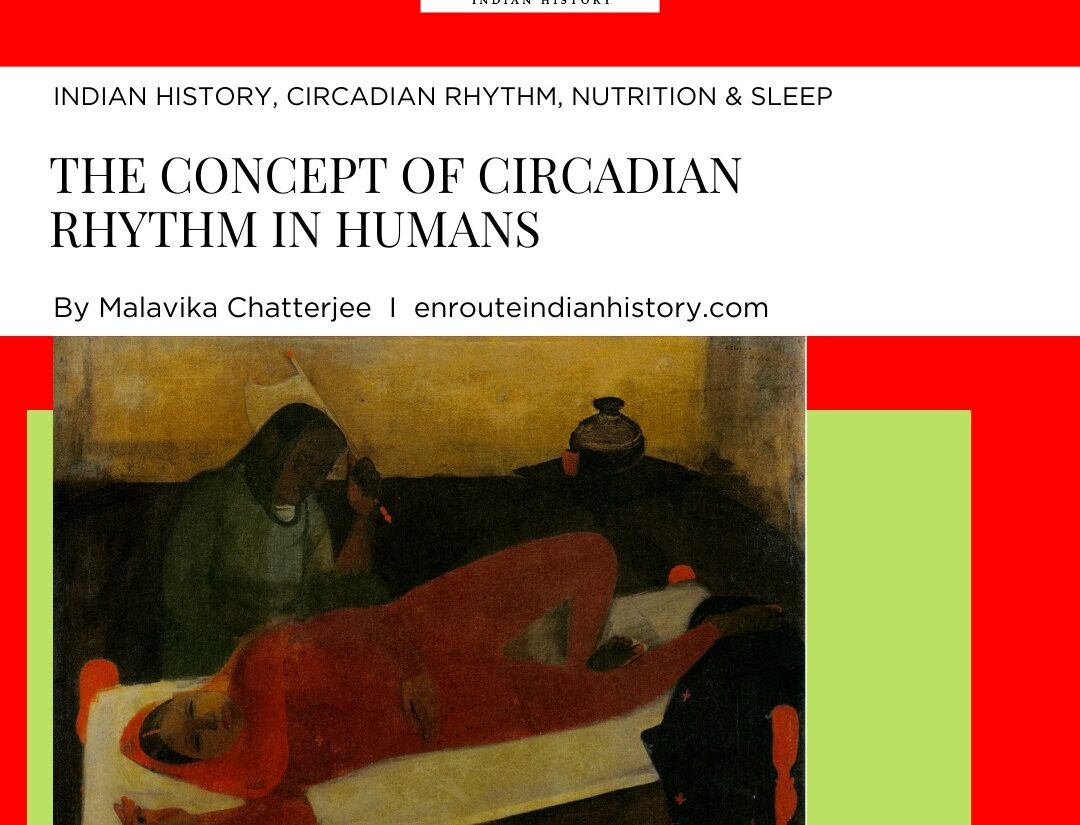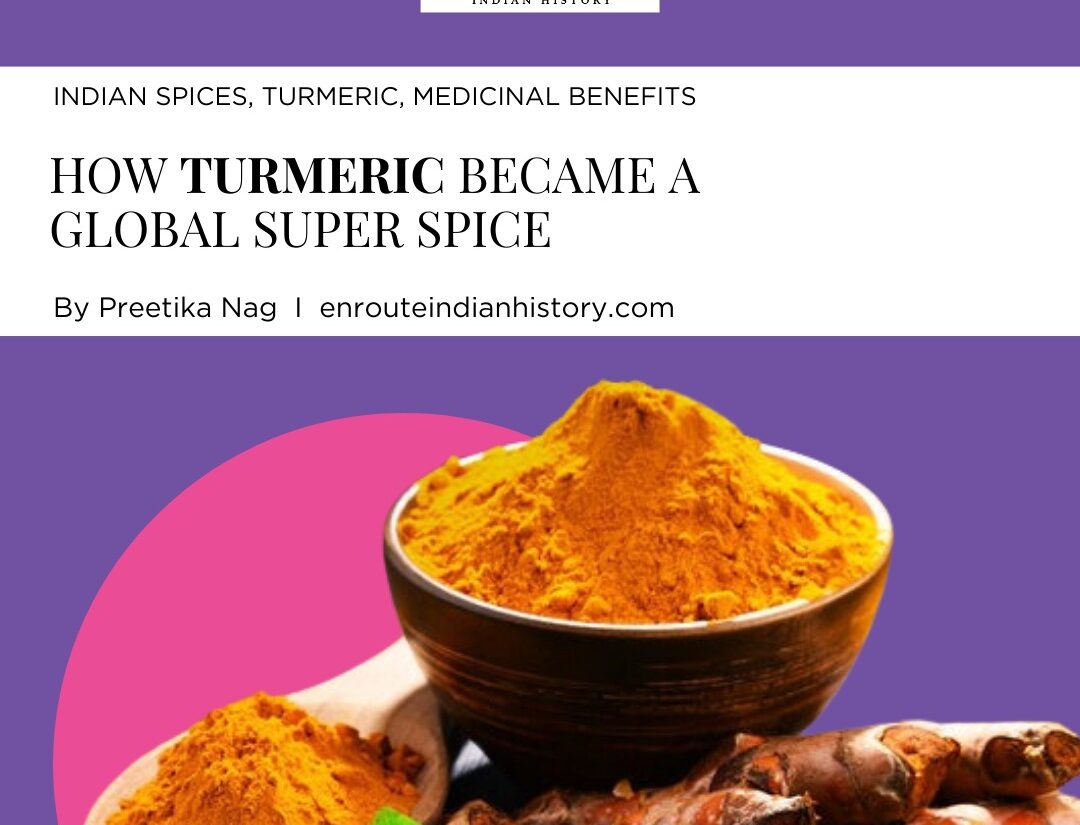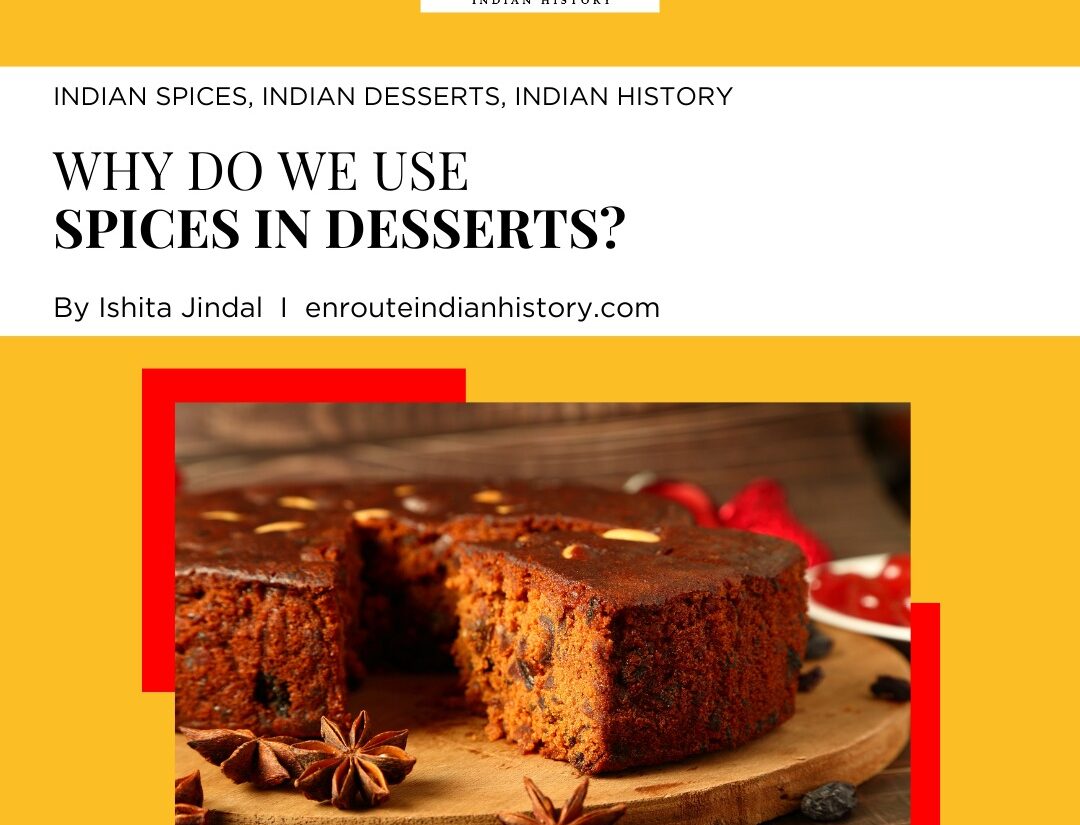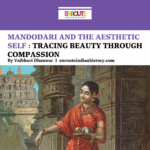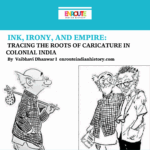A Thread of Devotion: The Mangalsutra’s enduring symbolism
- EIH User
- August 1, 2024
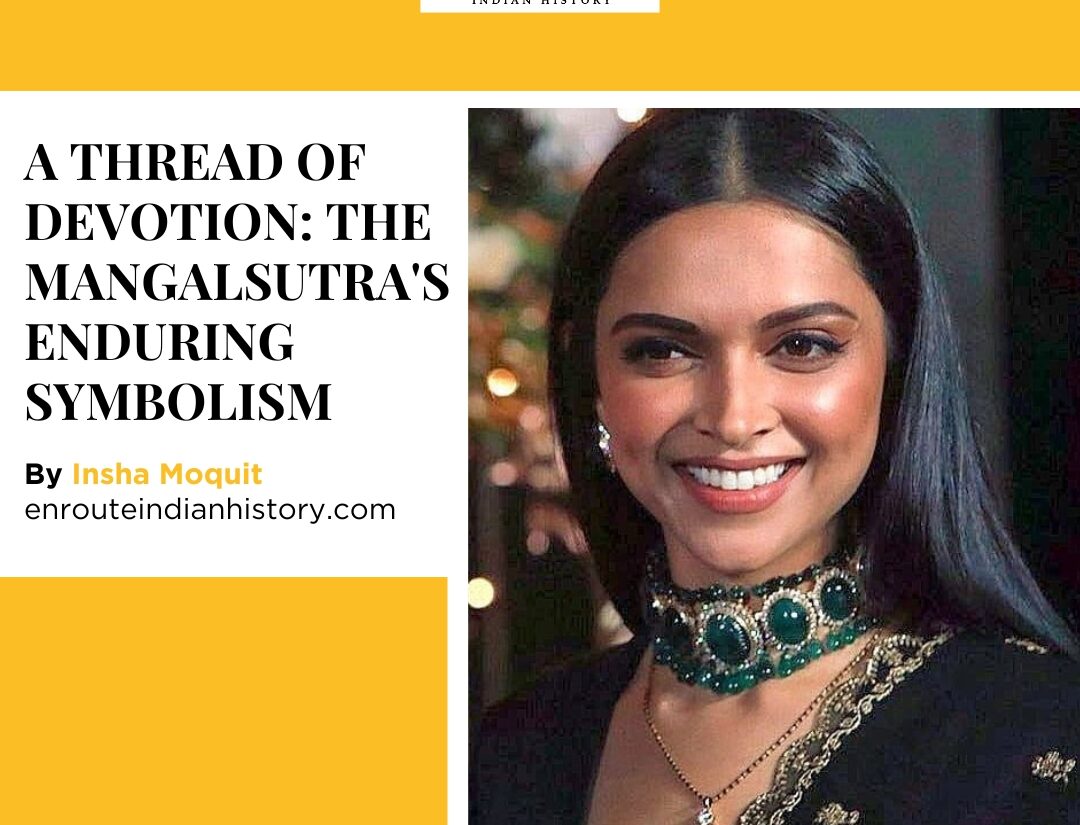
In Indian culture, jewellery is integral to daily life, festivities, marriages, and customs. Every item, from dainty silver anklets to elaborate gold necklaces, frequently has religious or cultural significance. Each Indian region has its own unique jewellery designs that are a reflection of the local craftsmanship and cultural heritage. Amidst this diversity, one jewellery piece that binds the Hindu matrimony culture is the Mangalsutra. The phrase “mangalsutra,” also known as “mangalsutram,” originated from the Sanskrit words “mangal,” which means prosperous, blessed, joyful, and successful, and “sutram,” which means cord.

(A modern black bead pendant Mangalsutra, source: Pinterest)
Although the exact origin of the Mangalasutra is unknown, old Vedic scriptures can be found at its roots. It appears from references that women were wearing it before 500 BCE. Evidence of mangalsutra is also present in our ancient didactic books, such as The Code of Manu, which prescribes wearing ornaments on specific occasions and mentions the sacred marriage thread, among other things. We have the archaeological evidence of this sacred thread in our possession in addition to literary proof. For instance, the Coorg marriage necklace has an analogous piece at Harappa; a necklace akin to it has been discovered in Mohenjo-Daro. It is made of small black beads connected by tiny gold chain links. It’s unclear if these adornments had the same functions in those locations as well or if their significance stems from the holiness associated with objects that have endured in the same shape for so many millennia.
The Mangalsutra: Tradition, Symbolism, and Science
Wearing jewelry has deep ritualistic meaning in India; ear and head ornaments from the country’s west and south bear witness to its worship of the sun, moon, and snake. The adornment associated with marriage varies by region. Conch-shell bracelets are a Bengali custom that represent a wife’s purity. Until recently, women in certain parts of northern India would wear the bichhwa, or ring and glass bangle, only if their spouse was still alive. The mangalasutra, sometimes called the thaali or bridal necklace, is an oblong necklace strung on a thread with one end rounded in Tamil Nadu and some areas of Karnataka. The marriage symbol for Kashmir is a long thread with an ornament at the end that is drawn through an opening pierced in the ear cartilage, known as Dhejoor.

(A kashmiri bride donning Dhejoor, source: Google Photos)
One of the most important aspects of Hindu weddings in India is the ceremony of mangalya dharana. A marriage cannot take place without the mangalya, but it can without any of the other rites. ‘Dharanam‘ means to wear, and ‘mangalya‘ denotes good things in Sanskrit. When the groom invites the bride to partake in a long and happy married life with him, the mangalya, or sacred thread, represents the commitment, safety, and security he is offering her. Three knots hold the sacred thread in place, each signifying a distinct component of the body: the casual body is represented by kaarana sharira, the subtle or pranic body by sukshma sharira, and the gross or physical body by sthula sharira.
Mangalsutra’s significance extends beyond religion and spirituality. It appears to have some strong scientific basis. Hindu tradition dictates that the Mangalsutra be worn beneath the innermost garment and that it be fashioned of pure gold. The therapeutic properties of pure gold are emphasized in Ayurvedic writings, particularly with regard to heart health. By drawing in cosmic vibrations from the surrounding area, it is stated that wearing a pure gold Mangalsutra touching the skin over the heart supports cardiac activity. It’s also said that these waves keep the couple’s connection joyful and strong.
It is also believed that the Mangalsutra strengthens immunity. It keeps the person lively and enhances circulation. Another health advantage of wearing a mangalsutra as prescribed is balanced blood pressure. According to Ayurveda, it is also thought to stimulate the Surya-nadi (Sun-channel), which awakens the energy in a woman’s body.
Mangalsutra In North Indian Culture
The term “mangalsutra,” which is primarily used by Hindus in North India, refers to a necklace of black beads that is fastened to a gold pendant known as a tanmaniya. Usually crafted from bare gold, they have a variety of patterns. Nonetheless, the bridegroom’s or bride’s caste or sub-caste has no bearing on the design. Mangalsutra is a significant element in most Hindu north Indian marriages, and there is a separate ceremony where the groom wraps the mangalsutra around his bride’s neck. Sindhi Mangal Sutra, The husband gave the bride a gold pendant on a black and gold beaded necklace on their wedding day. In Bihar, the mangalsutra (Tagpaag) design is known for its arc-shaped pendants and black beaded chain.
Popular in Gujarat and Maharashtra, the Vati mangalsutra has little gold pendants called vatis that resemble cups. These pendants symbolize the union of the masculine and feminine, often embodied by Shiva and Parvati. In addition to being exquisite, this design has great significance. These mangalsutras are made of black beads with two vatis in the shape of bowls on either side. The middle vati pendant, shaped like two cups, connects the two lines of gold and black beads that make up the Maharashtrian mangalsutra.
Shiva and Shakti, the masculine and feminine cosmic powers, are represented by the two strands of gold and black bead chain in this structure. The gold mangalsutra that connects them represents the sacred union of Lord Shiva and Shakti. The husband and wife are represented by the two bead strands fused together, which form a whole around his woman’s neck in perfect continuity.
Mangalsutra In South Indian Culture
Mangalsutras are known as Thaalil, Thirumangalyam, Mangalasutramu, Pustelu, and Maangalyamu in South India, particularly in the states of Karnataka, Tamil Nadu, and Andhra Pradesh. Depending on the caste or subcaste of the bride and groom, they can have varying sizes, shapes, and decorations. Wearing a yellow thread (smeared with turmeric) or a gold chain is the customary way to wear thali. Ideally purchased from the groom’s side, the family occasionally embellishes the main thaali with additional objects like gold roundels, corals, and money. In general, a thaali is crafted of 22K or 18K gold and weighs 4 to 8 grams (occasionally with rubies or diamonds set into it).

(Different Types of thali used in Tamil Nadu, source: Google pictures)
It is known as maangalya-sutra in Karnataka and is composed of two circular golden plates, black stones or beads, freshwater pearls, coral, and semi-precious stones. A magnificent piece of jewellery, the bandi thaali is exclusively worn at the yearly Girija Kalyana festival, which celebrates Shiva and Parvathi’s marriage. This specific form of thaali, or marriage pendant, is highly traditional and is mostly seen in the royal homes of the former Mysore region. The part of the clasp that is exquisitely crafted and diamond-studded is very closely clipped to the huge ruby pendant shaped like a thali.

(The customary south indian mangalsutra, source: Pinterest)
The word “thaali,” which among the Nairs of Kerala still has an old meaning, is used interchangeably with the word “mala,” which refers to a necklace; marriage is not a prerequisite for using this phrase. The cobra hood necklace, also known as the nagapada thaali, is the most traditional and well-known accessory worn by Nair women. Nair women think this was a gift from the gods to teach them to be patient and peaceful. The Syrian Christians of Kerala utilize Minnuas, the northern version of mangalsutras, an auspicious wedding thread. Hindus in Kerala also use thaali, also known as ela thaali, which means “leaf shape” or “leaf design” in Kerala. The ela thaali generally also comprises the Sanskrit syllable ‘Om’ embossed or cut-out on the leaf- shaped gold sheet.

( The Syrian Christians of Kerala utilize Minnuas, the northern version of mangalsutras, source: wikicommons )
The Mangalsutra: Rules and Customs
A mangalsutra should ideally be constructed of 108 fine cotton strands, which is considered an auspicious number, knotted together and stained yellow with turmeric or saffron. The pendant, a gold thaali, is strung in the middle of the thread. The priest delivers mantras (chants) during the marriage ritual as the groom fastens the mangalsutra around the bride’s neck with three knots.
In a Mangalsutra, the groom uses a holy thread known as a Thaali, or Mangalyam, and black and gold beads to tie three knots around the bride’s neck in the shape of a necklace. This symbolizes the couple’s unbreakable link. The bride’s life and well-being are symbolized by the necklace in the Mangalsutra. By wearing it, the bride is granting the groom’s wish to spend a hundred years with him. The act serves as a symbolic representation of that desire.
A member of the groom’s family, typically his sister, adds a third knot after the groom ties two with the Mangalyam. The three knots stand for the union of the bride and groom’s families as well as their dedication to one another.
Every knot represents a promise made by the groom or the groom’s relatives:
Manasa’s First Knot
Known as the Manasa, the first knot represents the vow the groom is making to the bride. The Manasa seals the couple’s commitment to one another and notifies their families that going forward, their lives will be united as they live in love and support of one another, much as how the bride and groom give each other engagement rings in Western society.
Double Knot: Vaacha
The dedication between each of their families is symbolized by the second knot. Vaacha ties the two families of the bride and groom together in the same way as Manasa links the couple together, strengthening their bond and demonstrating their families’ recognition of it.Like the exchanging of rings at a Western ceremony, the second knot represents the bride and groom’s newfound family alignment and their lifelong connection.
Knot Three: Karmena
The third and last knot, which is tied by one of the groom’s relatives—typically a sister—signifies the family’s commitment to look out for and take care of the bride. She is reminded by Karmena that she is a member of their family and that they will take care of her just like they would the groom. As a fundamental Hindu principle, respecting elders also symbolizes the young couple’s responsibility for their families, or more accurately, the family as a whole.
Trends In Mangalsutra: A Modern Makeover
Be it the 2nd century or the 21st century, wedding jewelry customs heavily incorporate the Mangalsutra. Nowadays, jewelry designers are developing a variety of variations of this auspicious thread. Some have jewels incorporated into them and are colorful. Diamond-studded and intricately designed mangalsutras have been popular lately.

(Celebrities adorning their Modern Mangalsutra, Source:Pinterest)
The custom of donning the mangalsutra has evolved with the times. In order to complement their professional image, contemporary working ladies choose a sleek and understated designer mangalsutra. We have also witnessed the arrival of the bracelet mangalsutra through this. The most popular designs among contemporary brides are floral ones. Some people adore adding their zodiac sign pendants to make their Mangalsutras uniquely their own.
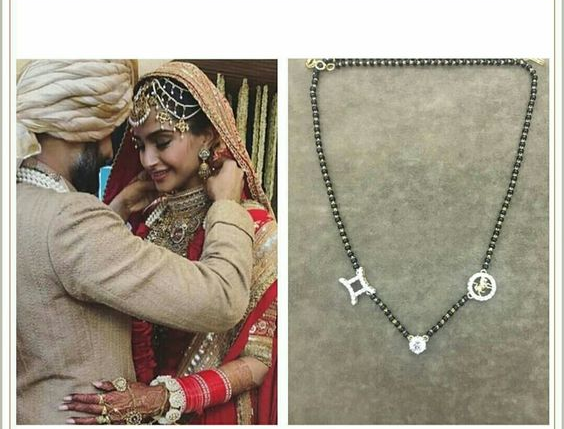
(Sonam Kapoor’s Customised Zodiac Mangalsutra, source: Google pictures)
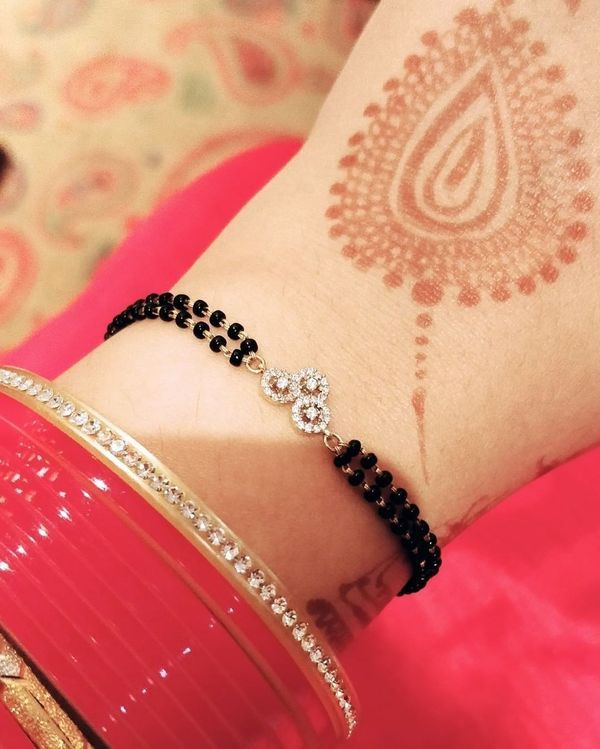
(Bracelet Mangalsutra, source: wikicommons)
Married women wear the mangalsutra for the rest of their lives since it is said to improve the health of their spouse and family. The designs and patterns have evolved along with modern fashions and shifting mentalities, but they have maintained the holy symbolism that is still relevant in India. The Mangalsutra is a traditional and spiritual protection for marriages, representing love, respect, and trust between a husband and wife.
REFERENCES
Bala Krishnan Usha, & Sushil Kumar Meera, Dance of the Peacock, Jewellery Traditions of India, Bombay, India Book House, 1999
Bhushan, Brij Jamila, Indian Jewellery, ornaments and decorative designs, first edition, Bombay, Taraporevala and Sons, 1964
Dave, Dushyant, Motifs in Ornamentation Special Reference to Rajasthani Kundan Meena Jewellery 16th To 21st Century, Banasthali University, 2017
Dey, Sumitha, Stylistic Changes in the Costumes and Jewellery in Indian Art: A study of the six great Mughal Dynasty in India, Silchar, Assam University, 2010
Fernandez, K.V. and Veer, K, The Gold that Binds: The Ritualistic Use of Jewelry in a Hindu Wedding, Advances in Consumer Research. Vol-31, 2004
Havemose, K, From Design Thinking to Design Making, Swedish Design Research Journal, 3. 2013
https://www.kuberbox.com/blog/mangalsutra-different-states- india/
Maheswari Uma, Dress and Jewellery of Women, Satavahana to Kakatiya, New Delhi, South Asia Books, 1995
Nandagopal, Choodamani & Iyengar, Vatsala, Temple Treasures, Temple Jewellery, Vol II, Karnataka, Crafts Council of India, 1997
Peacock, John, 20th century Jewellery. The complete Sourcebook, Thames and Hudson Ltd, London.6, 2002
